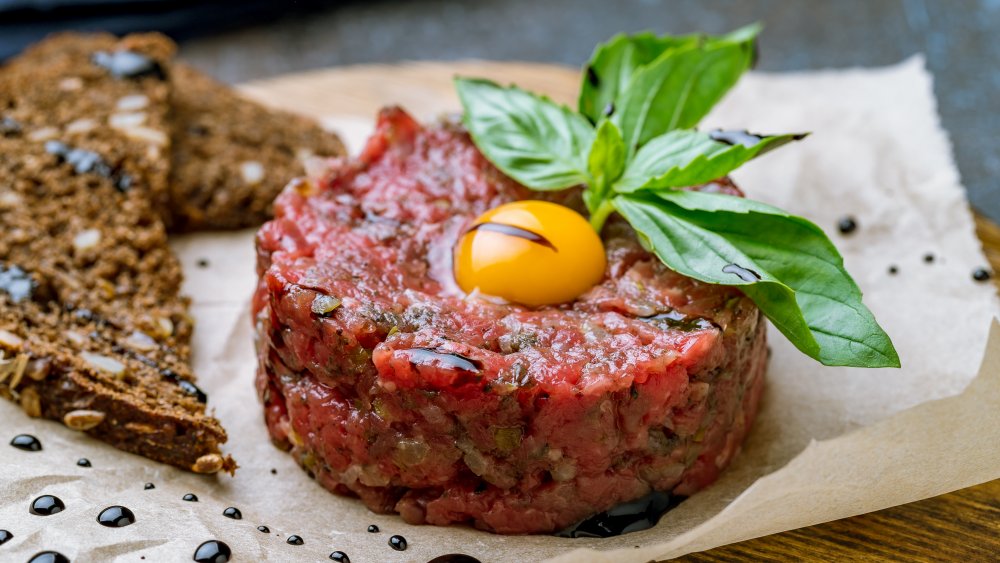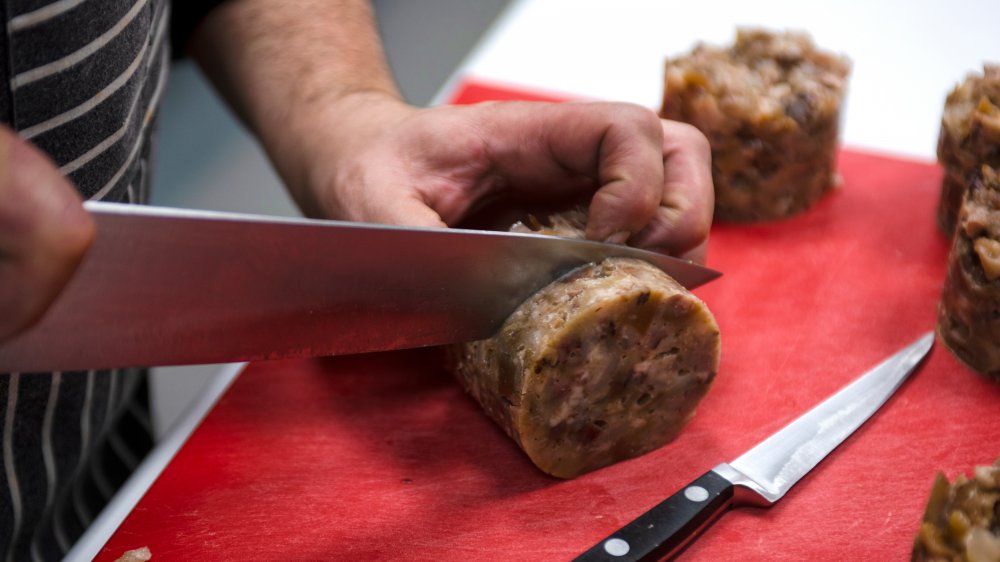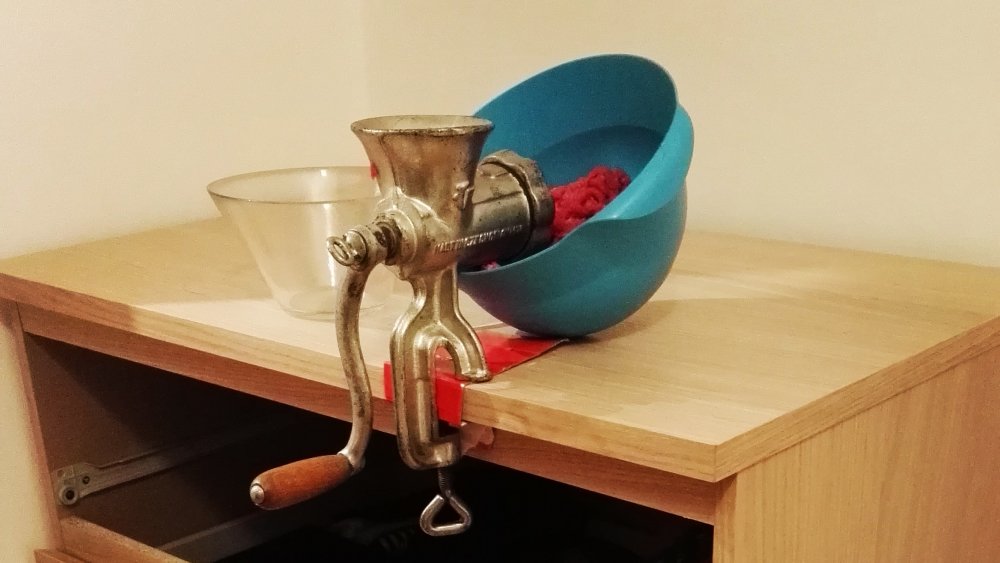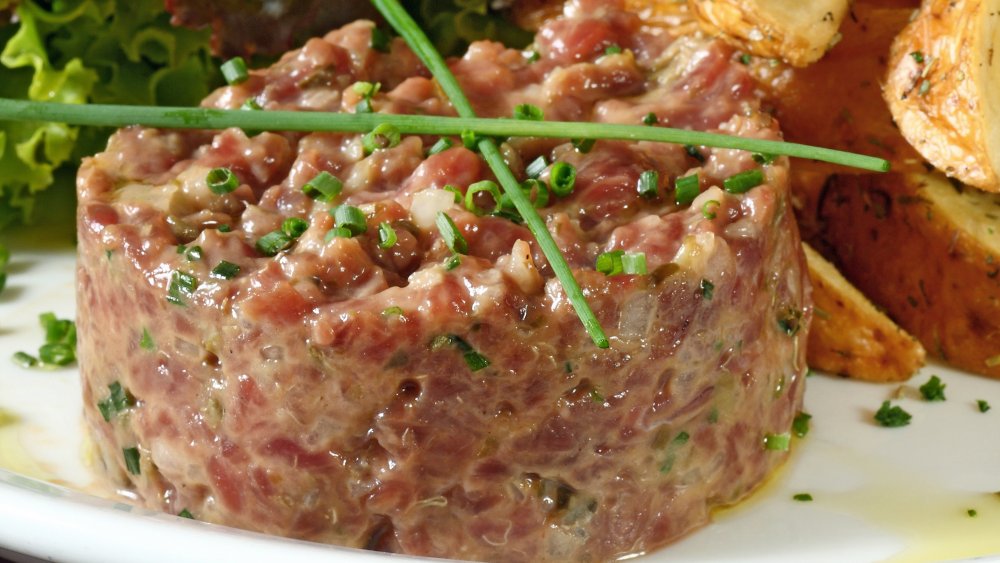Is Steak Tartare Safe To Eat?
Steak tartare — which is actually finely chopped or ground beef served raw — is, as Newsweek describes it, "meat in its platonic ideal." Although the publication admits that the dish is potentially risky due to the ever-present possibility of foodborne illness, still, it is "delicious partly because it is dangerous" — and not all that dangerous, either. In fact, eating rare — or even raw — beef may be safer, in some ways, than consuming overcooked beef, as excessive charring can be carcinogenic, they say.
McGill University's Office for Science and Society explains that, while food poisoning from steak tartare isn't entirely unknown, it does tend to be unusual due to the fact that this dish is typically limited to "high-end restaurants where hygiene is the rule" and the meat used comes from reliable butchers. However, it must be noted that the Academy of Nutrition and Dietetics (via EatRight) states that raw ground beef can never be considered safe due to the fact that potentially harmful bacteria on the meat's surface bacteria can be spread throughout the dish. They recommend that steak tartare or other raw meat dishes such as carpaccio should never be consumed by anyone with a compromised immune system or in another high-risk category for food poisoning — very young, very old, or pregnant.
How restaurants ensure steak tartare stays safe
A restaurant employee on Quora shared some of the precautions a good restaurant will take when preparing raw meat: "We have a special prep area in the kitchen that is kept even more meticulous than the rest. It is used for allergy dishes...and raw dishes like tartare, carpaccio, and ceviche." Other precautions include taking a cooking torch such as the kind used to make crème brûlée to the outside of the beef and then using a sanitized knife on a sanitized cutting board to remove the thin layer of cooked meat. Finally, the meat is served within minutes of grinding, and the final touches — seasoning, garnishing, etc. — are applied tableside. The shorter the window the beef is exposed, the less time it will have to pick up any potential contamination, those in the know explain.
How to prepare steak tartare safely at home
If you are wishing to prepare your own steak tartare, there are precautions you can take in your home kitchen, even if you're not able to set aside a special area or any dedicated utensils for raw meat use only. Several users of the Stack Exchange Seasoned Advice forum supplied tips meant to reassure one nervous home cook who was contemplating making steak tartare.
One recommendation was to skip the supermarket and buy from a butcher, while another was a variant on the restaurant method of browning the outside of the beef with a brûlée torch — the user recommended pan-searing the beef, then removing the cooked portion (and eating it as a lagniappe). Other helpful hints included minimizing any out-of-fridge time spent by the meat and, of course, using super-clean utensils.
Who should eat steak tartare
If you are not in a high-risk category, and you've taken all of the necessary precautions in preparing the dish itself or in selecting a good restaurant with absolutely no history of health code violations, then you might be able to enjoy steak tartare without having to spend the next few days in the bathroom (or hospital). Celeb chef Alton Brown himself endorses the dish, having dedicated an episode of Good Eats: The Return to its preparation. But even Alton, professed lover of this delicacy, does have to include the mandatory warning on his Food Network recipe: "Consumption of raw or undercooked eggs, shellfish and meat may increase the risk of foodborne illness."
Now whether the idea of raw beef appeals to you or not, that's a whole different story.



